Friday, September 30, 2016
Thursday, September 29, 2016
Eggucation

How to select the right eggs, whether you're interested in nutrition, animal welfare or price.
For years I've purchased brown eggs.
Specifically, Trader Joe's Brown Organic Free Range Eggs.
I bypassed the cheaper options because it seemed like the healthy thing to do. I had the vague sense the brown color meant they were healthier, more natural, but I couldn't tell you what any of the claims on the carton actually meant.
Then I stumbled across a fact that blew my mind: The color of the eggs has nothing to do with how the chickens are raised. Chickens with white feathers and white earlobes lay white eggs. Dark-feathered chickens with red earlobes lay brown eggs. That's it. The reason brown eggs cost more is the brown-egg-laying chickens eat more than the white-egg-laying chickens, so they're more expensive to raise.
Once I discovered the secret of brown eggs, I wondered what else I didn't know. What's the difference between free range and cage-free, and why are pastured eggs so expensive?
To read the entire article, click here.
Winterize Your Brain with Vitamin D
If your brain does not work optimally, you do not work optimally. It is plain and simple. All of our brains need a variety of things in order to function properly, like fuel and oxygen. The next big one may be vitamin D, the one most of us get very little of throughout the winter-and guess what? “Winter is coming.”
Wednesday, September 28, 2016
3 Exercises to Build Your Kettlebell Swing
As I wrote in my last article, the kettlebell swing is one of those bang-for-your-buck exercises that touches on the important aspects of strength and endurance. While it's a tremendous exercise and scalable for just about anyone, it does have a learning curve.
Tuesday, September 27, 2016
HES CrossFit: The Kids Are all Fit
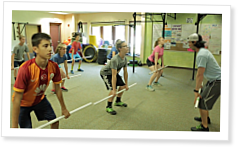
Peter Driscoll is a CrossFit Level 1 trainer and a physical-education teacher at Hartland Elementary School in Hartland, Vermont. He's also the founder of HES CrossFit, which operates out of a transformed kindergarten classroom in the school. The affiliate is helping the school's K-8 students gain strength and confidence through the integration of CrossFit into their daily lives.
Driscoll explains that when he brought research to principal Jeff Moreno “that showed him how movement positively impacted cognitive capacity and academic performance,” Moreno decided to support Driscoll's efforts to build the program.
As a result, what began as a small initiative with six male students, some PVC pipes and a few kettlebells has grown into a school-wide movement. Students now take exercise breaks throughout the day and can choose to do CrossFit during recess or elective periods or after school with their teachers and peers.
“We believe in getting the kids out of their seats. We believe in getting the kids to think creatively, to learn to be learners, to learn to be thinkers,” Moreno says.
Driscoll explains that they call the CrossFit room “the 'brain fit room' because students are learning that when they move, they're actually making their brains stronger and healthier, just like their body.”
Moreno notes that the program also builds character:
“One of the most important things that CrossFit does is it builds confidence in a middle schooler and an adolescent and a young adult.”
Video by Jay Driscoll.
15min 57sec
Additional reading: “Not Taking It Sitting Down,” by Maureen O'Hagan, published March 24, 2015.
Sell Less, Coach More
Every time I scroll through my newsfeed, I'm bombarded by some new sales and marketing whiz who has discovered the best, secret, four-step, guaranteed ROI funnel of the day.
Monday, September 26, 2016
Busted 10s and Benjamins
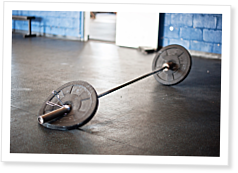
Affiliate owners discuss budgeting for replacement gear and making the new equipment last.
A 45-lb. plate can be a great doorstop.
Of course, it's a better fitness tool, but what else can you do with a broken bumper?
The business of fitness is tough work, and CrossFit athletes are tough on implements. As eager as affiliate owners are for their clients' PRs, progress inevitably comes with broken weights, snapped skipping ropes and busted rowers.
“Things are gonna break,” said Justin Riley, owner of CrossFit East Sacramento in California. “It's part of being a business owner that you're going to have to fix things and replace things and do maintenance.”
Equipment shelf life isn't always the first thing affiliate owners think of after they open their gyms, but according to Jeremy Thiel, owner of CrossFit Central in Austin, Texas, it's something they should consider from the start.
“It's very hard to know exactly when equipment's gonna go out,” he said.
With two locations and around 700 members total, Thiel has seen his fair share of damaged goods. Since he opened CrossFit Central in 2005, he's lost four rowers due to damage and wear and tear. He's purchased six barbells in the last six months alone, and every six months or so he orders a new batch of bands. These costs are obviously in addition to regular monthly expenses such as utilities, payroll or even chalk, and smart affiliate owners set a nest egg aside to cushion the blow, he said. For CrossFit Central, that's 3 percent of monthly revenue “so we're not caught off guard and we have that money available to reinvest,” Thiel said.
The figure was the result of some third-party number crunching: The percentage is based off membership base and past expenses that were closely analyzed by an accountant.
“It's really important for boxes to make sure they have bookkeepers and accountants that they're working with,” he said. “As an affiliate owner, you wear a lot of different hats, and managing your budgets and accounting, that's probably not your expertise.”
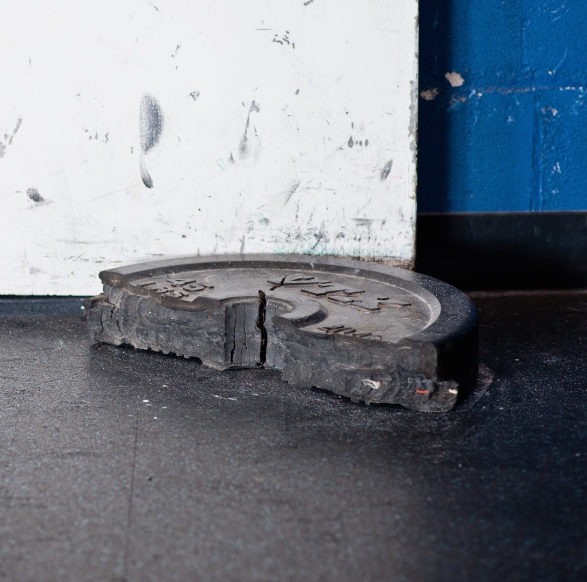 Perhaps also useful for burden runs, but not much else.
Perhaps also useful for burden runs, but not much else.
Kevin Montford, owner of CrossFit SoCo in Colorado Springs, Colorado, does things a little differently, replacing broken equipment and buying new things once a year with funds raised by an annual equipment fee. Each April, CrossFit SoCo members pay US$50 each toward replacement and new equipment (families pay only one $50 fee). The gym has around 350 members, and the equipment fee brings in approximately $15,000 each year.
Montford came up with the idea in 2013, when, after four years of affiliation, he found that replacing equipment was eating into paychecks.
“(The impact on the budget) was big,” he said. “People are pretty aggressive on equipment, and we were constantly breaking bumper plates and replacing medicine balls and slam balls that were busting.”
The key to the program's success, he said, is including members in the purchasing process. As April approaches, Montford takes stock of what needs replacing and writes it on the whiteboard with a cost breakdown for each piece of equipment. After replacement equipment is accounted for, members vote on what they'd like to buy with the rest of the money. Past votes have yielded SkiErgs, rowers and specialty gymnastics equipment.
“No one's ever complained about it; it's been great,” he said. “They're the ones who are going to benefit from it.”
At CrossFit Fort Bragg/Evolution Athletics, Daniel Skidmore and Chris McNamara take a less direct approach, rolling the cost of equipment into regular membership prices.
“I look at it as (equipment fees) are part of the encompassing package in your monthly membership,” Skidmore said. “You're paying to keep it nice.”
Tender Loving and Care
The best way to deal with broken equipment, McNamara said, is to minimize breakage in the first place by buying quality equipment-and then maintaining it.
“Spend a little bit more money up front in the hopes of getting a long run out of it and maximizing your total time with it,” he said.
Brett Marshall, owner of CrossFit Calgary in Alberta, Canada, agreed. Over a span of six years, CrossFit Calgary ate through several climbing ropes, each set made of different material, before switching to a more expensive-and more durable-synthetic rope that didn't fray down to a shoelace after regular use.
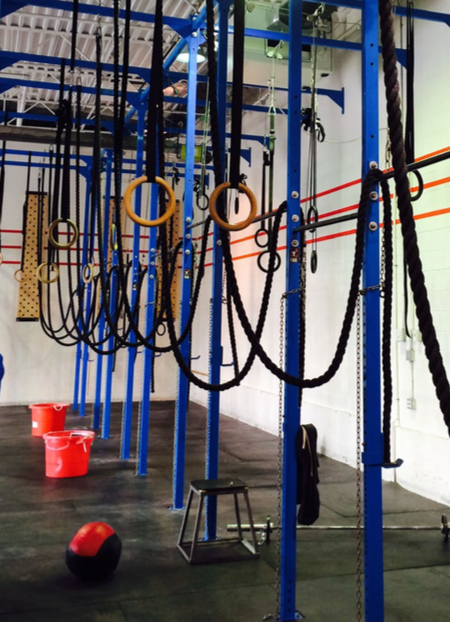 At CrossFit Calgary, more expensive synthetic climbing ropes have proven to be more durable.
At CrossFit Calgary, more expensive synthetic climbing ropes have proven to be more durable.
“We've been over a year now with these new ones ... and they are essentially undamaged,” he said, “which, for the amount of rope climbing that we do, normally there would have been extensive fraying going on by this point.”
McNamara stressed that aside from purchasing high-quality equipment in the first place, the best thing affiliate owners can do is take care of it.
“Don't forget to start out with a maintenance schedule from the very start so you're being more proactive with your equipment plan versus reactive,” he said.
CrossFit Fort Bragg/Evolution Athletics adheres to a maintenance plan divided into one-, two- and three-month intervals, with duties ranging from lubricating the chains on the rowers to inspecting pull-up rigs for rust damage.
“If you see something (broken), do something about it,” Skidmore added. “And when something needs (maintenance), just go ahead and check everything.”
House Rules
It's not just coaching staff who should do the maintaining, though. A huge factor in how long equipment lasts, Marshall said, is how it's treated. For that reason, CrossFit Calgary has a few house rules.
“Our house rule is pretty simple,” he said. “It says, 'Don't drop things that shouldn't be dropped.'”
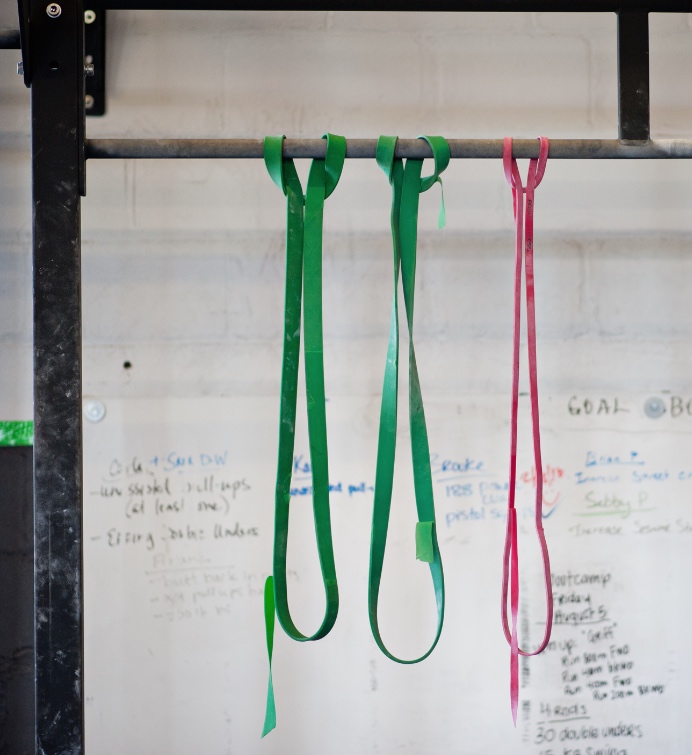 Pull-up bands fray with regular use, and gym owners should budget for replacement.
Pull-up bands fray with regular use, and gym owners should budget for replacement.
Light barbells tend to scatter when dropped, careening into other equipment-or people-and light bumper plates have a tendency to crack. Even kettlebells can crack when dropped on end from a height.
“We don't freak out if people are dropping things here and there (because) they're fatigued and if the intensity's very high, but as a general rule, our members are instructed in terms of how to care for the equipment, which definitely doesn't involve dropping it,” Marshall said.
But it's not just about rules and burpee penalties. It's about setting “a culture of respecting the equipment,” Riley said, and that starts with the staff.
Fresh off a stuffy gig as a trainer at a country club at which he had to tuck in his shirt and take care not to leave so much as a scuff on the floor, Riley opened CrossFit East Sacramento in 2008. He and his business partner “were so excited to be out of there that we ... started this gym with sort of a thrasher mentality,” he said.
Soon he had more broken 10-lb. plates than whole ones, and the sheetrock walls were pocked with holes punched by athletes' heels during careless handstand push-ups.
“That got old,” he said. “I think initially we didn't set a culture of having a lot of respect for the facility, and that's something we had to go back and do later.”
Still, at the end of the day, CrossFit affiliates are about fitness first. Do your best to prevent and save for damage, Riley said, but remember that a few broken plates are sometimes the price of progress.
“These facilities get used hard, and things will break,” he said. “Just understand that it's part of being an affiliate owner. It's really important that you are upkeeping the facility because people pay a lot of money to come into a place like this. Lead by example, and in a polite way, with good leadership, make sure you set a precedent for respecting the gym's equipment.”
About the Author: Brittney Saline contributes to the CrossFit Journal and the CrossFit Games website, and she trains at CrossFit St. Paul. To contact her, visit brittneysaline.com.
Photo credits (in order): Wendy Nielsen, Brett Marshall, Wendy Nielsen
Sunday, September 25, 2016
Facing the Second Half of Your Fitness Life
“The professional does not permit himself to become hidebound with one incarnation, however comfortable or successful. Like a transmigrating soul, he shucks his outworn body and dons a new one. He continues his journey.”
-Steven Pressfield
Saturday, September 24, 2016
Affiliate Roundup, Part 14: “Balance and Dedication”
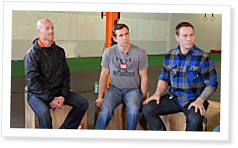
It takes more than just a Level 1 Certificate to run a successful CrossFit affiliate. In this series, learn about the various ways affiliate owners and trainers evolve and plan as they work to lead the fitness industry.
In Part 14, the conversation continues as CrossFit Inc.'s Tyson Oldroyd talks about balance and dedication with Pat Burke of MBS CrossFit, CrossFit Verve founders Matt and Cherie Chan, Nicole Christensen of CrossFit Roots, and David Tittle of CrossFit Low Oxygen.
As an affiliate owner, being dedicated to your business is important for its success. But what happens when other things in life demand your attention?
Matt says it can be detrimental to the business to have too many high-priority pursuits-if you're training for the CrossFit Games or splitting your time between gym ownership and another career, for example.
“You have your passions … but in reality, if you're pouring your heart and soul into one thing, something else is going to suffer,” he says.
Oldroyd echoes that sentiment, remembering something Australian CrossFit Games Masters athlete Matt Swift said: “You can only have one most important thing.”
Cherie agrees, but she adds that striking a balance is important because life is inevitably full of many important things.
Video by Mike Koslap.
5min 15sec
Additional reading: “Dirt Rowed” by Emily Beers, published Jan. 5, 2016.
American Children Are Among the World's Least Fit
An international research team co-led from the Children's Hospital of Eastern Ontario (CHEO) and the University of North Dakota studied the aerobic fitness levels of children and youth across fifty countries. The findings are disappointing for the US, to say the least.
Friday, September 23, 2016
Lift to Live Well
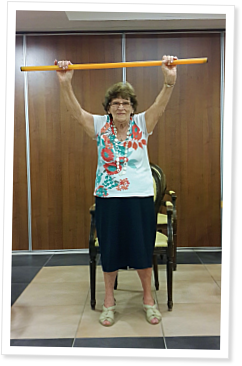
Physiotherapist Sharon Mallia reports on the success of CrossFit-based training with 20 seniors aged 75-91.
CrossFit is becoming increasingly popular in older populations, but so far no academic studies have delved into the topic of CrossFit and older adults. I am a physiotherapist by profession and was introduced to the world of CrossFit about three years ago. Since then, I have been incorporating some aspects of CrossFit in my work at a geriatric rehabilitation hospital, and after seeing its efficacy, I decided to incorporate CrossFit in my thesis submitted as part of a master's degree in gerontology and geriatrics.
The primary objective of this study was to test whether CrossFit principles can be safely and effectively used to improve the physical function of older adults, consequently increasing their level of independence in activities of daily living and offering them better quality of life. The second aim was to investigate the perception older adults have of this training program.
To read the full article, click here.
Triathletes: Prepare to Crush Your Bike Leg
Love it or hate, the bike leg is the biggest chunk of the triathlon. It's an area where hard work can really pay off, or mistakes can really set you back. Simply put, it is worth doing well, and there are a handful of things you can do to get the most out of your time in the saddle. It starts with showing up and doing the work.
Thursday, September 22, 2016
The Art of Making Excuses
Distractions and excuses are everywhere. It's as if people are playing Pokemon Go and walking around trying to catch them all. Every excuse seems logical to the person offering it, and may even be legitimate.
Excuses come in one of two types: those that contain blame, and those that invite accountability. Learning to differentiate between the two will eventually allow you to minimize blame, eliminate excuses, and become more accountable.
Wednesday, September 21, 2016
An Open Letter to the “Big Dogs”
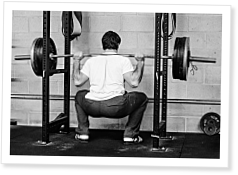
Nice deadlift. What's your Helen time?
We're well aware of your snatch PR.
We can indeed hear you grunting as you rep out.
We know you hold the top spot on the squat leaderboard.
And yes, we know all about your big bag of supplements, your special gear, your amp-up music and your pre-lift routine.
But a great many of us really don't care about your strength numbers.
Here's why: You're in a CrossFit program.
This, of course, is not to throw shade at those who are specifically training for powerlifting, weightlifting or strongman. You guys and girls are cool. We're thrilled to watch you clean and press our deadlift PR. We'll gladly lend our car if you need something to pull around the block. Have at that 700-lb. yoke with our complete blessing. We respect you and your goals.
We're also down with strong guys and girls who bust their asses all week in workouts that include heavy barbell work, long runs, gymnastics and everything in between. You guys are A-OK.
The people who need a reminder are the Big Dogs-those who are part of a CrossFit program yet clearly dodge every conditioning workout, taking pride only in their lifting numbers.
Lest you miss the point, let it be stated again: There is nothing wrong with a love of lifting. Training specifically to lift heavy is fantastic. Regularly lifting heavy is also part of a well-rounded CrossFit program. Lifting to target and eliminate a weakness is fine as well. However, exclusively lifting heavy to the detriment of other aspects of fitness is ridiculous if you claim to do CrossFit. CrossFit is not just showing up to max out on heavy days.
 Ben Smith's lifting numbers are impressive, but they're even more impressive when placed next to his scores on conditioning workouts.
Ben Smith's lifting numbers are impressive, but they're even more impressive when placed next to his scores on conditioning workouts.
If you only want to lift and begrudge anyone who suggests true fitness includes stamina, endurance, flexibility, conditioning and so on, you stick out like a chalk-free barbell at a CrossFit gym. We suspect you want to stick out because you believe it's important that many other people know how much you can lift.
If it wasn't, you'd probably be in the basement benching alone to the “Rocky IV” soundtrack.
Big Dogs generally lack self-awareness, so if you're unsure if you're a member of the pack, please review this list of telltale behaviors:
• Writing strength numbers on the whiteboard in larger print or in a color that stands out.
• Speaking overly loudly about recent strength PRs.
• Scaling loads up to turn met-cons into strength work.
• Justifying brutally slow met-con times by saying “but I scaled up.”
• Having a work schedule that somehow always prevents attendance on conditioning days.
• Commenting on other people's PR videos with thunder-stealing nonsense such as, “Finally joined the 400 club, hey?”
• Grunting and over-the-top PR celebration.
• Stating “I've done way more before” after any submaximal lift.
• Asking other members what they lifted only so they'll ask in return.
• Justifying poor results by mentioning soreness from an “epic squat sesh” earlier in the week.
• Claiming the most prominent squat rack so people can see what's on the bar.
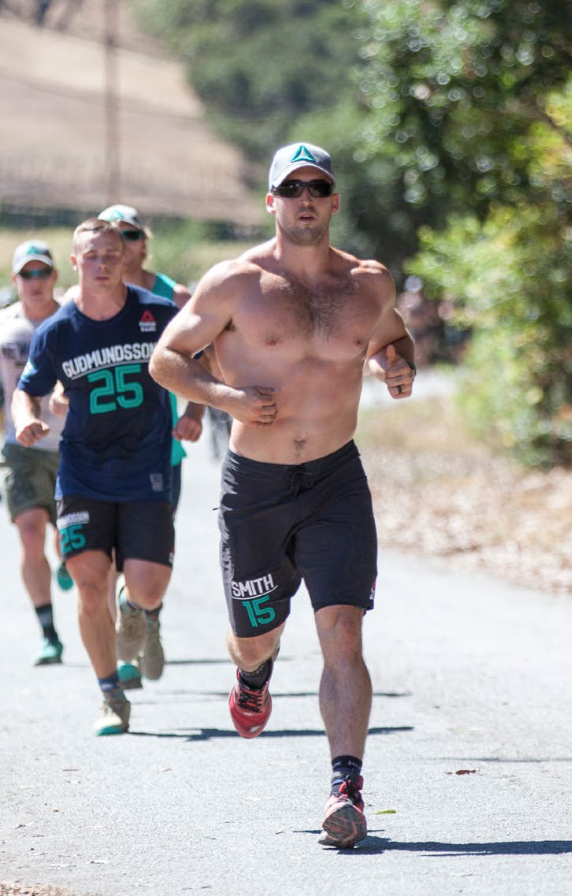 Top CrossFit athletes have proven that it's possible to earn a 300-lb. snatch, a 500-lb. squat and a 20-minute 5-kilometer time.
Top CrossFit athletes have proven that it's possible to earn a 300-lb. snatch, a 500-lb. squat and a 20-minute 5-kilometer time.
About six or seven years ago, Big Dogs were slightly more accepted in CrossFit programs. Your strength and power were indeed impressive, so some looked past an overall lack of fitness in what might be considered the early-middle part of the CrossFit revolution-a time when many athletes were only beginning to scratch the surface of what's possible.
Then something interesting happened: Athletes proved that you can get really, really strong while still improving all the other aspects of fitness.
CrossFit Founder and CEO Greg Glassman always said this would happen, but you scoffed at the thought and instead took pride in your place at the top of the deadlift leaderboard, which interestingly corresponded with your absence from the Helen leaderboard.
It took a bit of time for things to sort themselves out, but guys like Ben Smith have utterly ruined it for you. Smith's slightly outdated CrossFit Games profile lists impressive strength numbers: 480-lb. back squat (he's hit 500), 540-lb. deadlift, 300-lb. snatch and 335-lb. clean and jerk (he's lifted 370).
But Smith, the Fittest Man on Earth in 2015, can also run 5 kilometers in 20:20. He can do Helen in 7:19. He's scored 520 on Fight Gone Bad. He's done Filty Fifty in 16:17.
Smith's just one example. Look to the stats of just about any Games or regional-level competitor-male or female-and you'll find an astounding blend of strength and, yes, conditioning. Fitness, in other words.
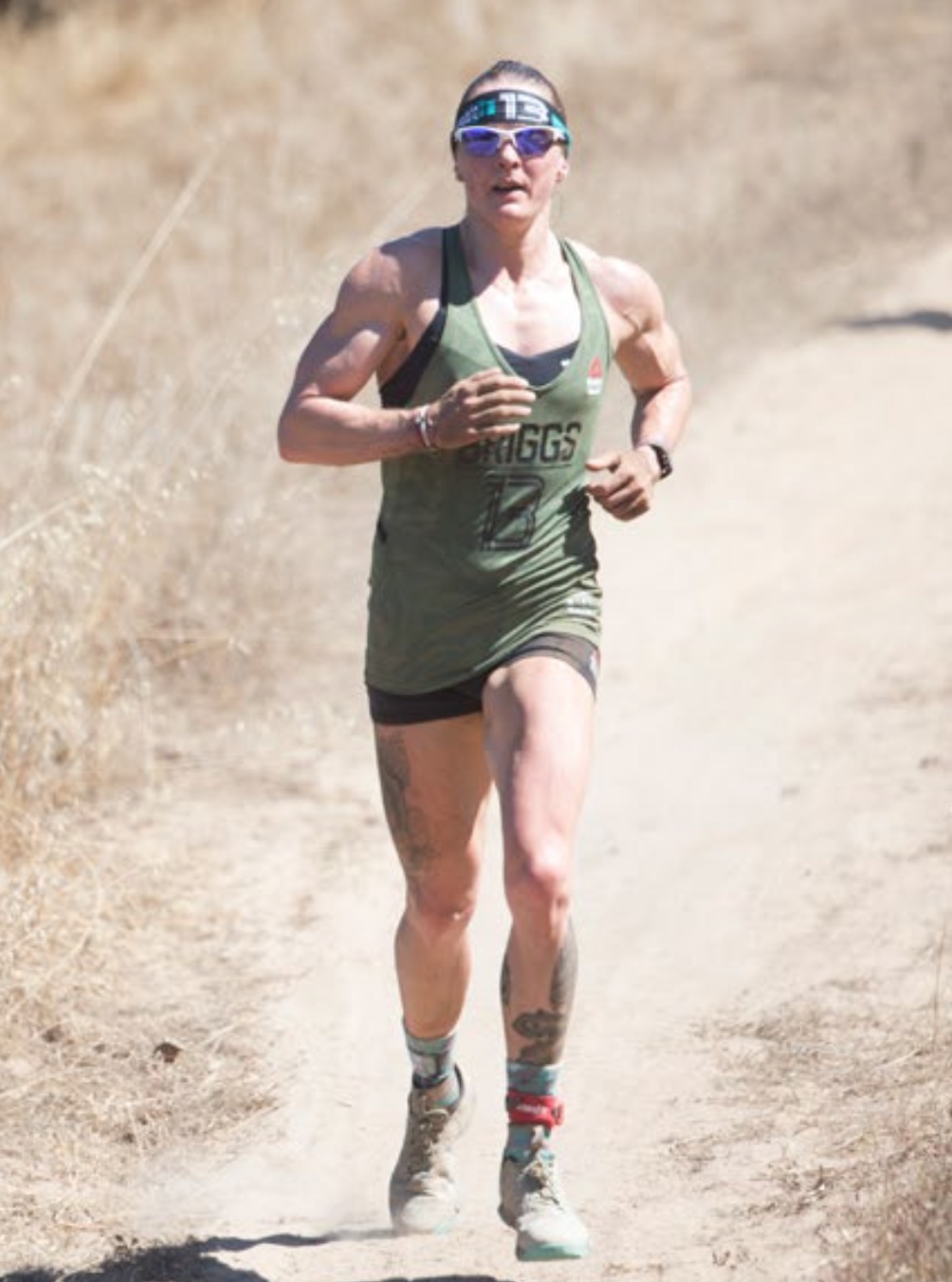 Sam Briggs, a former CrossFit Games champion, has a world-class engine in addition to significant lifting numbers.
Sam Briggs, a former CrossFit Games champion, has a world-class engine in addition to significant lifting numbers.
It's clear that Smith's numbers are not the sort of thing that would put him at the top of the podium at a weightlifting or powerlifting meet contested by highly trained specialists, but they're damn good for an athlete who trains for general physical preparedness, and they're more than enough to take the Big Dogs out of the conversation in a CrossFit box.
This is terrible news for you, as your prized strength numbers are now often equaled or significantly bettered by athletes whose fitness allows them to be good at every single CrossFit workout from one-rep-max deadlift to Murph. Every Big Dog has his or her day, so you might beat these athletes in one or two strength workouts, but they'll smoke you in the next nine-if you show up, of course.
You're quickly becoming a rarity. The strong guy/girl is being replaced by the strong athlete who can run, row and bang out muscle-ups, too.
You really need to make a simple choice: train like a lifter or train like a CrossFit athlete. Either option is totally fine. If you select the former, expect us to cheer you on as you bend the bar. Bending the bar is very cool.
“It is not a character flaw. There is no value judgment. Rather, you are not advancing your fitness. Instead, you are advancing a very narrow bandwidth of a specialized capacity,” as stated in the “CrossFit Level 1 Training Guide.”
Usain Bolt has done exactly that, and no one should criticize him. Specialization isn't bad. Specialization is what allows people to break world records. But specialization also 100 percent ensures that certain elements of fitness will be neglected on purpose.
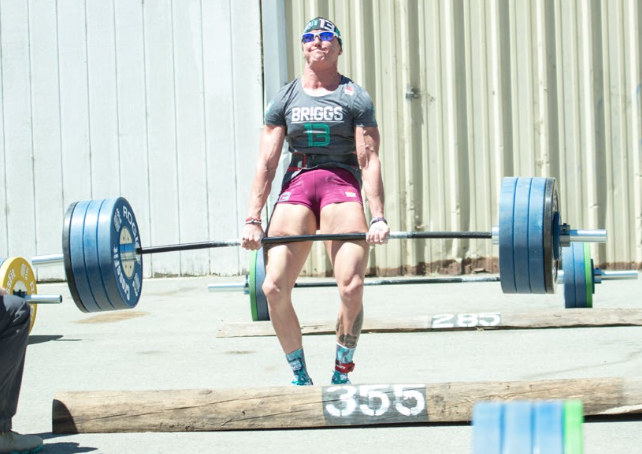 If you do CrossFit, why covet a big deadlift or a great Cindy score? Why not earn both?
If you do CrossFit, why covet a big deadlift or a great Cindy score? Why not earn both?
So if you choose to stick with this CrossFit thing, keep in mind that we're all chasing the kind of well-rounded fitness that allows us to be good at any physical task.
That doesn't mean you need to give up your love of lifting, and you don't have to hide your ear-to-ear grin on deadlift day. We want to see you load up the plates and pull, and we'll be cheering as you notch a new PR. But you do need to start showing up to conditioning and gymnastics workouts and putting in some effort. Stop ducking the 5-kilometer run or trying to do Cindy with 225-lb. squats that hide your inability to do pull-ups quickly. Quit benching after class and do some rowing intervals instead.
Read “What Is Fitness?” and realize strength and power are but two of the 10 attributes we're training. Buy into the program.
If you're really into overall fitness, feel free to join us for a sweet 5 by 5 of heavy back squats.
But we're doing a 400-meter run after each set, and the workout is scored by time to completion.
About the Author: Mike Warkentin is the managing editor of the CrossFit Journal and the founder of CrossFit 204.
Photo credits (in order): Chris Nolan/CrossFit Journal, Naveen Hattis/CrossFit Journal, Dave Re/CrossFit Journal, Ruby Wolff/CrossFit Journal.
What's the Point? Check In With Your Goals
"Begin with the end in mind," says Stephen Covey. I don't recall much else from Covey's book, but that quote sticks out in my mind. His idea is to have a firm vision of your goal in mind, and the actions you take should all move you closer to that goal. This is a principle I apply when I practice both Movnat and Brazilian jiu-jitsu (BJJ).
Tuesday, September 20, 2016
Traditional vs. Undulating Periodization in Youth Athletes
Every coach worth mettle uses some form of periodization, which is a big word for planning variations in an athlete's training over a given portion of time. Periodizing a training program effectively allows an athlete to steadily progress and achieve “peaks” in performance when necessary. Two popular forms of periodization are traditional (TP) and daily undulating (DUP). Traditional is characterized by high initial volume and low intensity that gradually shifts to low volume and high intensity.
Monday, September 19, 2016
CrossFit Lifeguard: Jeremy Magee
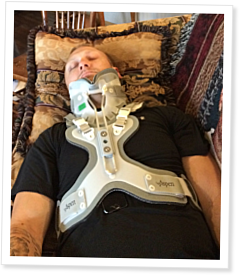
A big, strong back saved a retired Marine's life after a 25-foot fall broke four of his vertebrae.
Jeremy Magee has been in combat twice: once in 2003 with the Marine Corps and then again in 2010 with the Pennsylvania National Guard. Both times in Iraq. He knows what it's like to fear for his life.
“Not many things surprise me or take my breath away, by any means,” explained the 36-year-old air-traffic controller.
But a day in mid-October 2014 did.
Magee took his then-12-year-old son out for a typical hunting trip about half a mile from his mother's house in Martinsburg, Pennsylvania. The borough of 2,000 people sits about 100 miles east of Pittsburgh. The area is heavily wooded and teeming with deer.
He hung two tree stands-one for his son and one for himself. Magee watched as his son climbed in and secured his safety belt. Then he stepped onto his own tree stand, leaning “very lightly” onto the same branch he had used to brace himself while on his son's stand. Magee worked to secure his own safety belt. That's when the branch snapped, dropping him about 25 feet onto his right side.
“Most of the impact was on my head and neck,” he remembered.
Magee was knocked out for a few seconds. He awoke to see his son descending from the tree stand.
“Are you OK?” his son asked.
Magee did a self-assessment.
“I wiggled my toes and told him, 'Yeah, I think I'll be all right.'”
With his son's help, Magee got to his feet. He knew he had to get to a hospital. But first he had to get back to his mom's house.
“That half mile was the longest half mile of my life.”

His mother took him to the nearest ER, Nason Hospital in Roaring Spring, a small facility “about the size of my house,” Magee said. It was unequipped for Magee's injuries, so an ambulance took him about 30 miles north to UPMC Altoona hospital. There, doctors told him he had a severe concussion and four broken vertebrae; they feared damage to his spinal cord.
A slew of medical staff examined Magee, including an ER doctor and a spine surgeon. What they discovered was good news: Magee's spinal cord was unharmed. Surgery would not be required.
“Well, sir, if you didn't have the muscle mass that you do in your back and the strength you do in your back, I would not hesitate to say you would have died out there and at the very minimum you would be paralyzed,” Magee said one doctor told him.
Magee had started CrossFit nine months earlier.
“That muscle, that density helped protect him from just shattering his back and having no hope,” said CrossFit Hershey owner Tim Steel, who coaches Magee.
Before CrossFit, Magee's workouts comprised traditional Army protocol: running, sit-ups, push-ups-a regimen he now calls “mundane.”
A week following his accident, Magee was back at work; an additional week after that, he was back at CrossFit Hershey. For four weeks, Magee wore a body brace that covered the length of his ribs and went up to his neck. Still, he managed to get to the box for time on the stationary bike. After two weeks of that, Steel added a load of mobility work.
“We weren't stupid. I'm conservative with things,” Steel said. “We went by feel. He didn't lift heavy for a while.”
Today, Magee is training to compete at next year's CRASH-B rowing competition, aiming for a 2,000-meter time under 6:20.
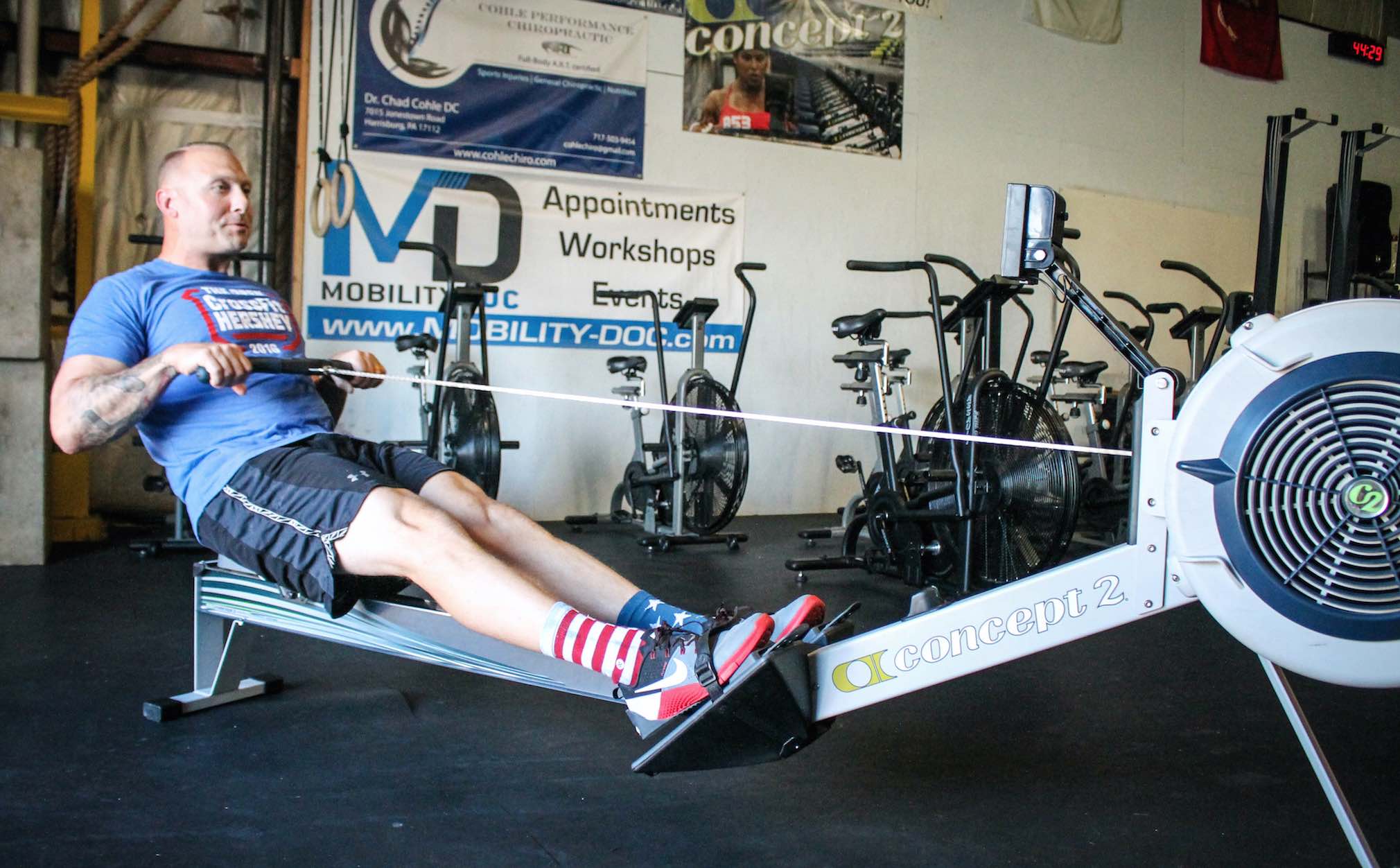
And when pointedly asked whether it was CrossFit or his military training that saved his life that day in October 2014, Magee didn't hesitate.
“I definitely would attribute it to CrossFit. … The military doesn't, in any of the branches that I've been in, cover in detail the amount of physical fitness and exercise that encompasses what CrossFit is.”
About the Author: Andréa Maria Cecil is assistant managing editor and head writer of the CrossFit Journal.
Photo credits (in order): Courtesy of Jeremy Magee, Courtesy of CrossFit Hershey
Sunday, September 18, 2016
Simplify Your Approach to Amplify Your Results
In an industry full of hype and conflicting information it can be difficult to figure out who and what to believe.
Saturday, September 17, 2016
Affiliate Roundup, Part 13: “Programming as Culture”
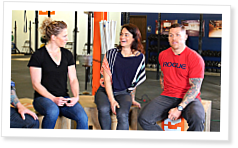
It takes more than just a Level 1 Certificate to run a successful CrossFit affiliate. In this series, learn about the various ways affiliate owners and trainers evolve and plan as they work to lead the fitness industry.
In Part 13, the conversation continues as CrossFit Inc.'s Tyson Oldroyd discusses programming as culture with Pat Burke of MBS CrossFit, CrossFit Verve founders Matt and Cherie Chan, Nicole Christensen of CrossFit Roots, and David Tittle of CrossFit Low Oxygen.
If you consistently program a strength element followed by a metabolic-conditioning workout, are your clients going to come to expect that pattern every day? These trainers say yes.
Cherie says programming should be complex.
“Programming should be more of a science … . It's not about what you feel or what you want; it's about what works,” she says. “It's about results. They're walking in your door to get the results.”
No matter what your strategy, the group agrees that the way you program will cultivate a culture within your gym.
Burke likes to mix it up.
“I do a little bit of everything … . It's CrossFit-anything and everything.”
Video by Mike Koslap.
6min 10sec
Additional reading: “Tinkering Trainers” by Andréa Maria Cecil, published March 15, 2015.
Starving on a Full Stomach
In the modern world we eat more than ever before. But in spite of this surplus of calories, we may be functionally starving, because we may not be getting all that we need from the modern diet to truly thrive.
Friday, September 16, 2016
Rack It Right
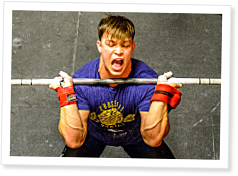
Zachary Long explains how to identify and correct flexibility limitations in the front-rack position.
Front-rack positioning can make or break the CrossFit athlete.
Poor flexibility in the front rack is one of the most frequent complaints in the gym, and without good positioning an athlete's ability to properly perform the front squat, clean, overhead press and jerk can be significantly affected.
The front-rack position is a combination of several motions: shoulder flexion and external rotation, elbow flexion and pronation, wrist extension, and thoracic-spine extension. As with any movement or positioning fault, a better understanding of the various components will allow the athlete or coach to more effectively correct underlying problems.
To read the full article, click here.
4 Breakfast Salads to Fuel Your Morning
It's time to shake up your routine and bring salads to the breakfast table. Salads may not be a typical breakfast food, but these four breakfast salads have a winning combination to start your day with an easy, pleasing, nutrient dense meal.
Nutritionally powerful, hearty greens such as spinach, kale, and swiss chard, are the perfect base to top off with a protein, complex carbs, and healthy fats. These ingredients turn a basic salad into a power package for building lean, strong bodies.
Thursday, September 15, 2016
Why Non-Contact ACL Injuries Should Never Happen
I am by no means an expert in sports medicine, orthopedics, or physical therapy. What I am is a walking, talking encyclopedia of experience. And I am here to say that non-contact ACL injuries should never happen. In the wake of Teddy Bridgewater's gruesome knee injury, it's time we talked about why.
Wednesday, September 14, 2016
A CrossFit Calling
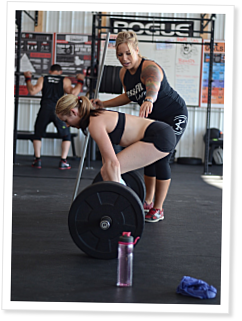
Like many entrepreneurs, Lindsey Barber changed careers to follow her passion.
Lindsey Barber gripped the wheel. Most of the 30-mile drive between Unity and Cut Knife, Saskatchewan, is open road, nothing but 360-degree field and sky, and she tried to enjoy her morning commute to a job she disliked.
She pulled into the small lot outside the chemical-and-seed supply company where she worked as a sales agronomist. Some days were spent loading pallets of seed and chemicals onto trucks; others found her visiting surrounding farms and meeting with growers. Mostly, she had to sell-fertilizer, pesticide and seed.
“(My) job was basically to get the farmers on our program to buy as much product as they can, telling people what they need to hear just to make the sale,” Barber said.
But Barber hated selling. She felt dishonest pushing products farmers didn't really need and felt “like I was serving no purpose in the world,” she said.
She cut the ignition and sat in her car, fighting tears and unable to will herself to go inside. She never thought work would be like this.
“My parents always said if you really like what you're doing, then work won't be so bad,” she said. “And I knew that this was not something I wanted to be doing forever, that there had to be something more for me to do. But I just could not come up with something that I would love to do enough to do it for the rest of my life.”
In 2011, a year into Barber's agronomy position, she noticed an unusual picture on her boyfriend's Facebook feed. It featured a woman doing a one-armed handstand-“and she had abs,” Barber added.
Barber messaged the woman, asking what she was doing in the photo.
CrossFit, she replied.
The 40 Days of Movement Challenge
For the next forty days, I want you to do the exact same training program every day. Why? Beyond simplifying your life, you will learn how to start and finish something. You will learn that consistency has and always will trump intensity.
This program has you focus on five movements:
Tuesday, September 13, 2016
The Only Variable That Matters
I hate to be the bearer of bad news, but there's something you need to know. Your program doesn't matter. Neither does your coach, or your diet. In fact, not a single article or piece of advice or video on this very website is going to do the tiniest bit of good for your health, strength, or athleticism. There's only one variable in training, nutrition, or life in general, that matters. It's the key to everything else you want to accomplish, everything you want to become.
Monday, September 12, 2016
What Science Says About Your Carb Tolerance
A lot of my vegan friends love high carbohydrate diets. On the whole, they tend to respond really well to them. But all too often, they make the deductive leap that because it works for them, then it must work for everybody. Low-carbers and keto-philes are equally guilty of this n=1 conundrum.
Sunday, September 11, 2016
How to Return Safely to Training Postpartum
As a mum, you've experienced physiological changes that are unique to females and which are unable to be replicated in any other situation. Your body has undertaken a transformation, which commenced the moment you became pregnant and continues well beyond birth.

Saturday, September 10, 2016
The Greatest Olympian: Bolt or Phelps?
The Games of the XXXI Olympiad are now over. The athletes have all gone home, and many are enjoying the transition period of their periodization cycles. A significant number of others who retired after the Games are now adjusting to their new post-competitive life.
Friday, September 9, 2016
The Glassman Chipper, Part 2
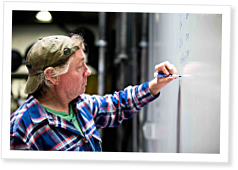
We challenge you to improve your mental fitness by reading our Founder and CEO's CrossFit Journal articles.
“When we explained that we thought our workouts were so effective that if we were to post one every day, someone would eventually find them, try them, have great results, and come back and tell friends, the dot-comers laughed heartily and condescendingly chortled, 'Ahhhh, the old grassroots approach!'”
Greg Glassman wrote that in the 2005 CrossFit Journal article “www.crossfit.com.”
On Feb. 10, 2001, the first workout of the day went up on CrossFit.com. Starting in September 2002, CrossFit's Founder and CEO supported these workouts with the CrossFit Journal, originally an e-zine emailed to subscribers. In 2008, the publication evolved to the website your currently see-“Journal 3.0” as it was called in a retrospective that announced the new site.
Just as the emailed monthly zine reached its end in 2008, Journal 3.0 is approaching its end. CrossFit.com was revamped earlier this year, and we're currently working on a significant upgrade to the CrossFit Journal.
Journal 4.0 will include all the features you would expect: responsive web design, improved navigation and searchability, social-media integration, modern content presentation and so on.
With our current format nearing the end of utility-and with reference to “The Glassman Chipper” that presented our founder's first 38 CrossFit Journal articles-we're showcasing Glassman's written work from April 2004 to August 2007 below.
By summer of 2007, the first CrossFit Games were in the books, affiliate numbers were growing and the seminar schedule included increasing amounts of travel. Luckily, Glassman had amassed a growing number of Journal contributors who could carry the momentum he had built when it was time to delegate writing duties and attend to other aspects of CrossFit Inc.
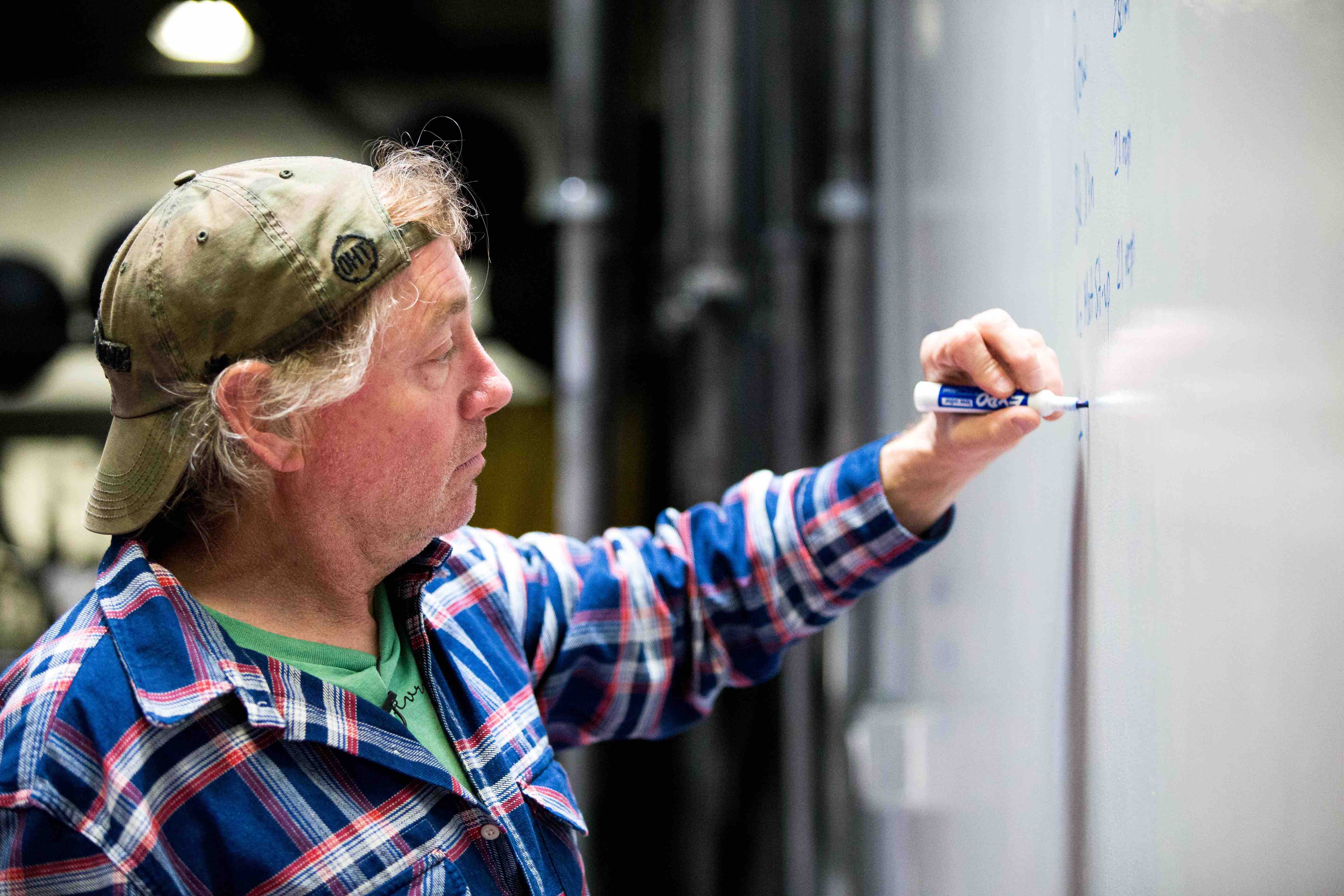
Presented below are 47 Glassman articles, many of which are buried in our blog format. They range from technical pieces to works of fitness philosophy, critical responses and workout prescriptions. The latter category-the Grinder series-contains 13 named workouts designed for larger crews to complete in austere conditions. These workouts are programmed far less frequently than Fran and Helen, but coaches managing large groups should consider them a great resource.
Perhaps prime among the articles is “Virtuosity,” a call to action that's no less inspiring today than it was in 2005.
But don't just read that one.
The pursuit of virtuosity dictates that you read them all.
CrossFit Journal Glassman Chipper, Part 2
For time, read all articles listed below from start to finish in order:
“The Moves,” published April 2004.
“CFJ 21: Zone Meal Plans,” published May 2004.
“What About Cardio?” published June 2004.
“Ring Strength,” published July 2004.
“Why Fitness,” published July 2004.
“Assistance for Bodyweight Exercises,” published August 2004.
“The Kettlebell Swing,” published September 2004.
“Medicine Ball Cleans,” published September 2004.
“A Beginners Guide to CrossFit,” published October 2004.
“'The Girls' for Grandmas,” published October 2004.
“Pullup Challenge,” published November 2004.
“The New Girls,” published November 2004.
“CrossFit PT” published December 2004.
“What About Recovery?” published January 2005.
“Gymnastics and Tumbling,” published February 2005.
“Fooling Around With Fran,” published March 2005.
“Kipping Pullups,” published April 2005.
“Working Wounded,” published May 2005.
“Garage Gym II: The Revolution,” published July 2005.
“The Overhead Squat,” published August 2005.
“Digital Coaching,” (with Mike Burgener) published August 2005.
“Virtuosity,” published August 2005.
“The Lifting Shoulder,” published September 2005.
“The Glute-Ham Developer Situp,” published October 2005.
“CrossFit Induced Rhabdo” published October 2005.
“Skill Transfer Exercises for the Snatch,” published November 2005.
“www.crossfit.com,” published December 2005.

“Scaling Professional Training,” published January 2006.
“Professional Training,” published January 2006.
“Validity of CrossFit Tested,” published January 2006.
“The Scoop and the Second Pull,” published January 2006.
“The Grinder: CrossFit Operations Order #1 'CHAD,'” published July 2006.
“The AOFP CrossFit Austere Program,” (with Wade Rutland and J.T. Williams) published August 2006.
“The Grinder: CrossFit FRAGO #2: CARLA,” published September 2006.
“The Grinder: CrossFit FRAGO #3: VICTORIA,” published October 2006.
“The Grinder: CrossFit FRAGO #4: YBF,” published November 2006.
“The Grinder: CrossFit FRAGO #5: PATRICIA,” published December 2006.
“The Grinder: CrossFit FRAGO #6: GOMEZ,” published January 2007.
“Evidence-Based Fitness Discussion,” published January 2007.
“The Grinder: CrossFit FRAGO #7: DYER,” published February 2007.
“The Grinder: CrossFit Frago #8: SHANE,” published March 2007.
“The Grinder: CrossFit FRAGO #9: GIROUARD,” published April 2007.
“Understanding CrossFit,” published April 2007.
“The Grinder: CrossFit FRAGO #10: NOLAN,” published May 2007.
“The Grinder: CrossFit FRAGO #11: LEGER,” published June 2007.
“The Grinder: CrossFit FRAGO #12: PALMER,” published July 2007.
“The Grinder: CrossFit FRAGO #13: SHORTY,” published August 2007.
About the Author: Mike Warkentin is the managing editor of the CrossFit Journal and the founder of CrossFit 204.
Photo credits: Dave Re/CrossFit Journal
Why Commitment Is More Important Than Motivation
I'm with Bob Geldof and The Boomtown Rats: I don't like Mondays either. It's not because I hate my job. I consider myself fortunate enough to love what I do. It's because I know my social media timeline will be clogged up with a bunch of vacuous quotes like “It's Monday, don't forget to be awesome! #mondaymotivation.” I just don't think a bunch of motivational quotes is going to have a significant impact on your ability to stick to your fitness goals and help you realise your ambitions.
Thursday, September 8, 2016
Shoulder Mobility for Kettlebell Sport Athletes
The shoulder joints are a complex, in both senses. They're a physically complicated group of joints that, when healthy and acting together, make up the most marvellous, flexible, and sublime piece of natural architecture.

Shoulder Mobility for Kettlebell Sport Athletes
The shoulder joints are a complex, in both senses. They're a physically complicated group of joints that, when healthy and acting together, make up the most marvellous, flexible, and sublime piece of natural architecture.

Wednesday, September 7, 2016
CrossFit Lifeguard: Stephen Walker
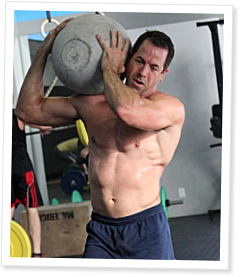
Neurosurgeon credits Stephen Walker's fitness with saving his life while he fought polymicrobial brain infection.
Stephen Walker's moniker is “Mr. 5 a.m.”
Since he joined CrossFit Palm Beach in December 2012, he's shown up every single day, most of the time for the 5-a.m. class.
Coaches have ribbed him on his aggressive workout schedule, stressing the importance of rest and recovery. Walker told them his time at the box is an investment in his future. He couldn't have been more right.
In late June 2015, 37-year-old Walker began to feel run down.
Within 48 hours, he had a fever and soreness on the left side of his throat. It wasn't cause for concern. His daughters, 1 and 5 years old then, had similar ailments. He had probably caught it from them.
But within another two days, Walker found himself convulsing as he sat in his office at Critton, Luttier & Coleman law firm in West Palm Beach, Florida.
“I went and stood on the corner in the sun to try to warm up,” he remembered. “I finally was able to calm it down. I got my keys and went home.”
That same day, Walker stopped at an urgent care facility.
“I didn't have a doctor before all this. ... I hadn't had one since I had a pediatrician as a child.”
Urgent care staff tested him for strep throat and the flu. Both tests were negative. Once they heard that Walker's young daugh- ters were sick, they said he had likely caught something from them and advised he go home to rest.
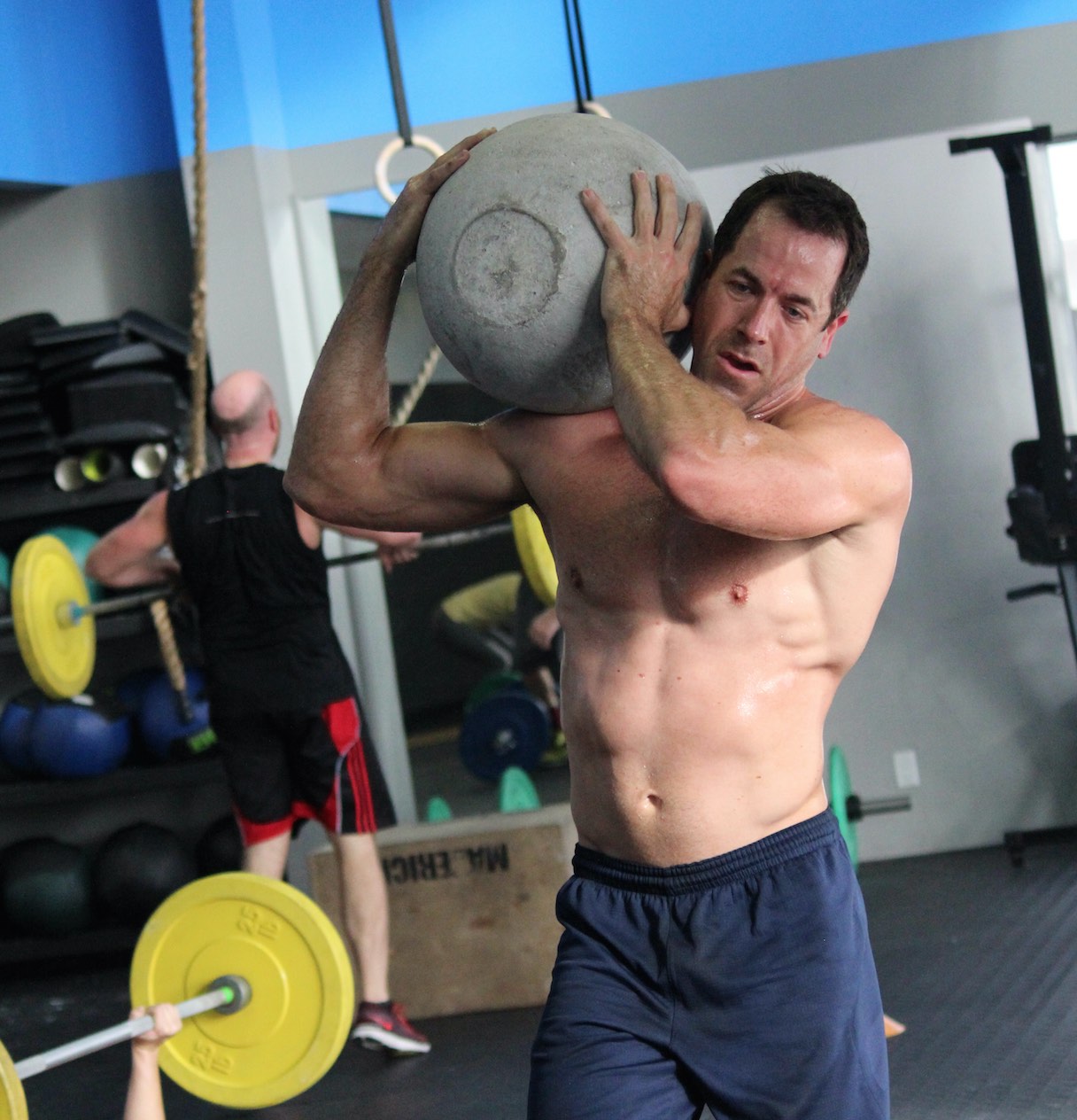
The next day, July 1, Mr. 5 a.m. didn't get out of bed. When his wife, Robyn, returned to check on him midday, Walker was still in bed. When she tried talking to him, he didn't make sense. She called an ambulance.
Walker ended up in St. Mary's Medical Center's trauma unit. He was “highly confused, highly agitated,” recalled Dr. David Petruska, the neurosurgeon on call that day. “He had symptoms of severe cerebral edema.”
Hospital staff sedated Walker for three weeks. A machine helped him breathe. During that time doctors were perplexed, wonder- ing if they were dealing with “an infectious process,” said Petruska, a neurosurgeon of 25 years.
A CT scan revealed hemorrhages on the front areas of Walker's brain.
“It just did not look like classic trauma. It was too symmetrical,” Petruska continued. “We began to (suspect) that maybe some- thing more was going on.”
An intracranial monitor-to measure brain pressure and draw spinal fluid-gave doctors more information.
“We come to the conclusion that he had a brain infection. How he developed his brain infection is probably curious,” Petruska said.
Five days before Walker started feeling unwell, he had been surfing in Jupiter. Petruska hypothesized that Walker contracted a polymicrobial infection through an unknown something in the Atlantic Ocean.
“Also very odd,” the neurosurgeon noted.
As doctors struggled to unravel the mystery of Walker's condition, Robyn sat by her husband's side in the hospital. She listened as doctors told her that in the unlikely event her husband survived he would be lucky to be a receptionist at his law firm, much less a practicing attorney.
“Yeah, we did paint a very bleak picture,” Petruska said. “Somebody will survive but that is (not) necessarily (good) quality of living. We may save a life but not a human being.”
Doctors ordered a course of antibiotics with little hope.
When it comes to an infection of this sort, Petruska noted, “the morbidity and mortality are high.”
Petruska next saw Walker on the afternoon of Oct. 29 for a legal proceeding involving one of Walker's clients.
“I want to thank you for saving my life,” Walker told the doctor. “How'd I do that?” Walker said the neurosurgeon asked. Walker began recounting.
“It struck me like a bolt of lightning. It was astounding,” the doctor said emphatically. “I was stunned because I didn't im- mediately recognize him, because he (was) a very handsome, good-looking man, very well-proportioned, and he looked absolutely fantastic.”
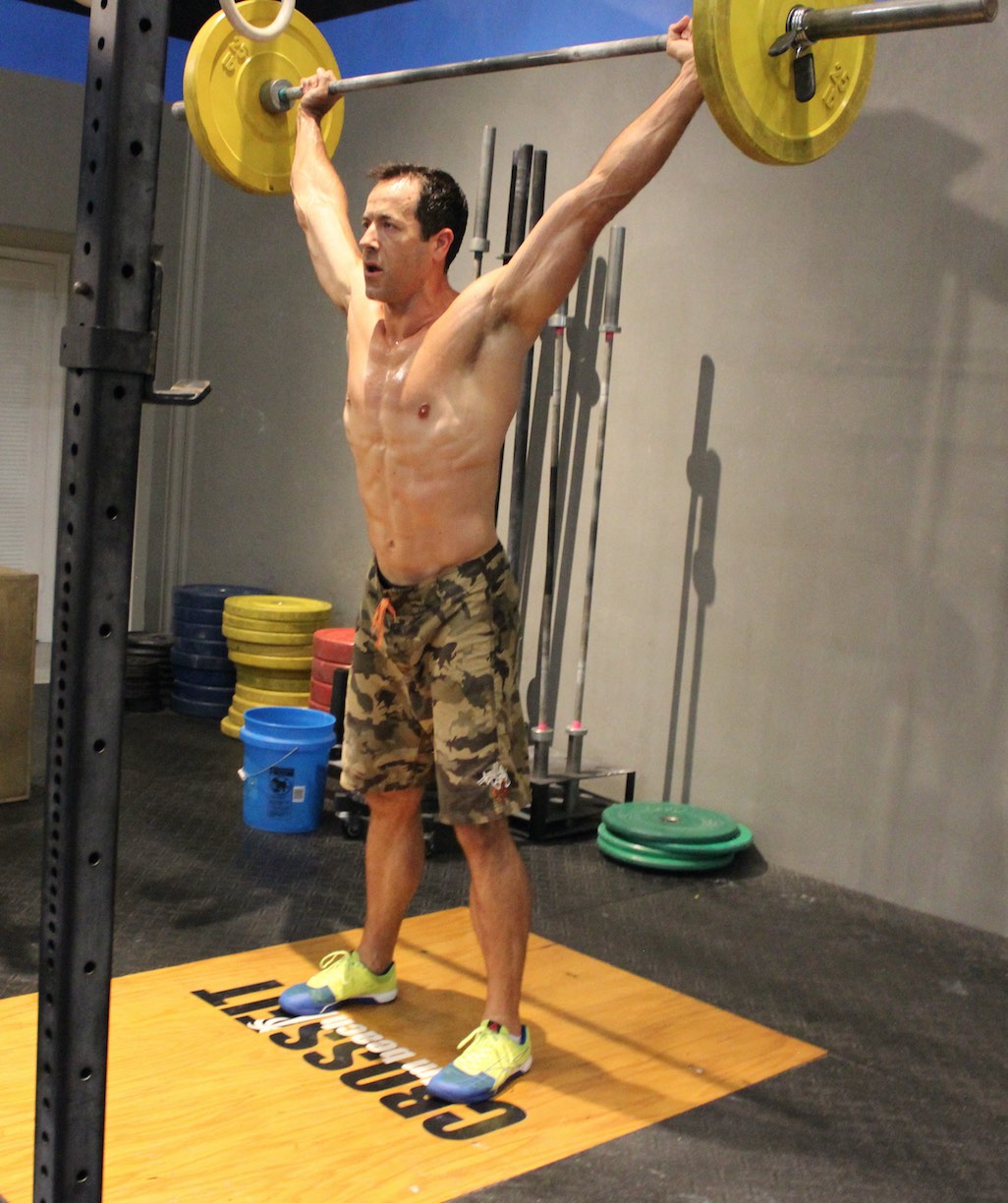
When Walker was discharged from St. Mary's on July 31, 2015, the 6-foot-3 former prosecutor was about 150 lb. By the time he saw Petruska again in October, he had regained muscle mass and was roughly 200 lb.
“There's no question in my mind,” Petruska said, that Walker survived the near-death experience because of his fitness. And, Petruska added, because of St. Mary's medical care.
“He was in great physical condition.”
Walker's seven-days-a-week investment had paid dividends. And then some.
“I would not be here if it weren't for all the hard work I put into the gym,” he said assuredly. “I prepared myself unknowingly.”
As CrossFit Inc. Founder and CEO Greg Glassman has said, fitness plus luck equals health:
“It is the part you can do something about plus the part you can do nothing about that sums to your outcome. So make the most out of fitness and you will not be part of the seven out of 10 who die unnecessarily due to lifestyle.”
The now-39-year-old Walker has returned to practicing law in the areas of complex commercial and construction litigation, as well as marital and family law. He's also surpassing previous PRs, including a recent triathlon time of 1 hour, 21 minutes; his previous best was 1 hour, 27 minutes. When he first returned to CrossFit Palm Beach after his hospital stay, Walker could not do a single push-up or pull-up, and it was “a struggle” to deadlift 75 lb.
“People at my gym think I'm a little crazy because I'm back to where I was before,” Walker said jokingly.
Still, he did not emerge unscathed. At the moment, Walker does not have a keen sense of smell and reports reduced physical sensation.
“I don't feel pain as much as I used to,” he said. “I'm not sure if it's that or the mental aspect of what I went through.”
Walker elaborated: “I continually push myself as hard as I can because now I know that's what allowed me to push for my life.”
Treatment is ongoing, and doctors have given Walker a timeline of 12 to 18 months for a full recovery.
Today, he's back to his seven-days-a-week schedule at CrossFit Palm Beach and isn't shy about sharing his story, said coach Tony Frezza.
“He knows it saved his life and he knows it can save more lives.”
About the Author: Andréa Maria Cecil is assistant man- aging editor and head writer of the CrossFit Journal.
Photo credits: Tony Frezza




















